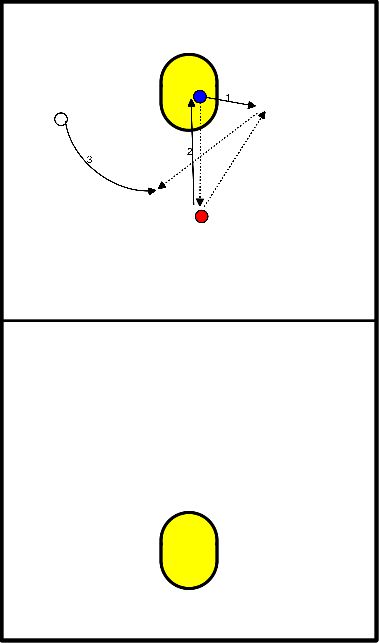Korfball drills for technique passing / attack
- You stand about seven metres apart.
- You play the ball to the player who is running away, she catches it and you pass her to the other side and back.
- The first time you do that with two hands, the second time you throw back with the outside hand.
- That means you throw with the right hand one time and with the left hand the next time and on the way back the other way around.
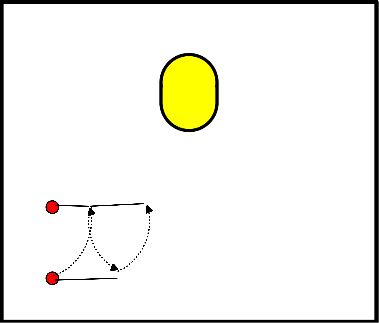
- We're gonna pass as a group.
- We stand in two rows opposite each other.
- We'll start as follows:
- Pass with two hands, catch with two hands.
- Pass with your good hand, catch with two hands.
- Pass with your good hand, catch with your good hand.
- Pass with the lesser hand, catch with two hands.
- Pass with your lesser hand, catch with your right hand.
- With the whole team, catch and throw well, if you don't do this and the ball falls to the ground 5 times.
For variation, you can also add special ways of throwing (behind the back, through legs, etc.)
- 4 different coloured pawns around the basket,
- One stands in front of a pawn, the other stands under the basket with a ball.
- The leader calls out the colours in order, then you have to run in that order and shoot at the last colour.
- If you score first you get 1 point. Who is the first to get 5 points?
- Then change.
- Diamond shape with pawns.
- Make several runs and pass in the meantime.
- Push off very important
Goaltender throws to forward goes after the ball for:
- pass
- dodge
- shot
Bitch catches and throws to opposite side etc. With 2 balls at the same time.
- Make pairs at the hive.
- Place two hats approximately 2.5 meters apart and 2.5 meters from the basket, as shown on the diagram.
- Player 1 starts in the middle, Player 2 starts as passer/rebounder under the basket.
- Player 1 makes a fierce running line to the one hat, receives the ball on the outside hand and passes back.
- Player 1 makes a fierce run to the other hat and scores a short chance.
- You do this for 1 minute, after this you switch.
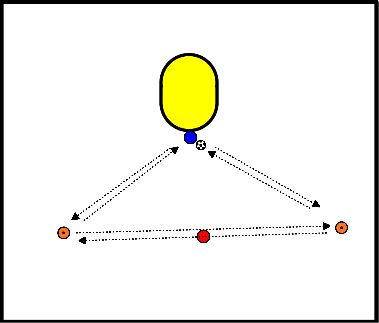
Only the square and not the diamond is used in this form of training. The primary training objectives here are:
- Keeping space in the box, through running lines in a square
- Timely replenishment of vacant position, timing running moments.
- Passing ball at pace to next player.
Note: the square must be smaller because the diamond is not used initially. Player must be at a distance they can throw.
For the exercise, there is an inside and outside square marked by pawns. So players are not allowed to go outside that path and therefore not make the square smaller than that:
- Player 1 plays to 2 -> runs after own ball at reasonable pace;
- Player 2 plays directly to 3 -> runs at reasonable pace after own ball;
- etc.
- The ball pace goes up slowly.
- When the children have this under control, the ball goes the other way.
The ball should be passed quickly and passed faster and faster.
Eventually, players should always be able to get to the empty spot just in time, because the pace of the ball is almost faster than that of the players.
Eventually, players should always be able to get to the empty spot just in time, because the pace of the ball is almost faster than that of the players.
Playing tight balls is a requirement here.
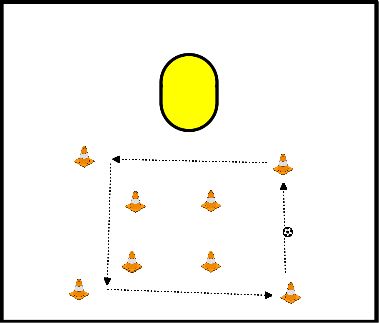
- The player goes down the speed ladder from the left side to the center. There the ball is ready on the ground,
- This ball is played inside and then the person who ran the ladder runs around the ladder and cuts inside with speed.
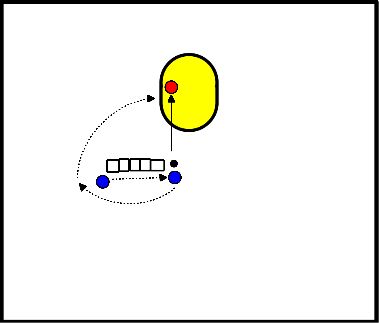
- Player A starts in front of the post with a shot until he/she scores.
- After a goal to next point.
- If missing; run back and forth to previous spot and shoot where you missed.
- Finish the round.
- This can also be done without running up and down.
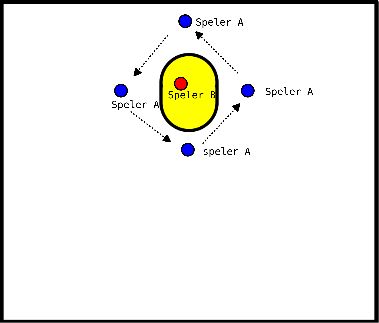
- the back player cuts in to the support as the ball enters the field and gets it played.
- the passer simultaneously runs across the support to the rebound and takes over.
- the support passes the ball to the diagonal player in the break and takes the shot
- If that is not successful, the ball can be passed to the outgoing first rebounder
At that point, there can be doubles/ breakthroughs from both the first and second players and you get opportunities again if the then standing rebounder steps out again or the earlier support makes an action without the ball.
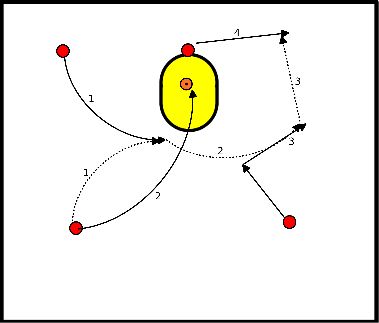
- The first ball is played deep from the front pocket.
- Then the other front comes in and passes the ball.
- The first passer runs across the block to the catch.
- The adjuster runs on the ball side for a through ball to the post.
Alternatively, the ball is played back directly for the distance shot. - The player under the post steps out as soon as the rebound is taken over from the front and ensures that the player with the ball has two points of attack.
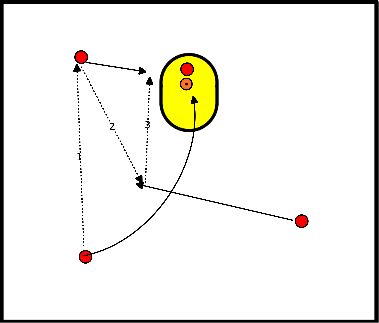
- Ball is in front of red. white moves up and down making it look like she is going to get the ball from red.
- Blue sprints aside from the post and gets the ball from red.
- Red sprints to the post to take the catch.
- White comes to the spot of red, gets the ball and shoots.
- Red catches and gives the ball to white and sprints out sideways.
- Red gets the ball and white sprints to the post to intercept, blue takes a shot in front of the basket.
